Swimming, snorkeling, or diving with whale sharks is high up on many wildlife watchers' travel bucket lists. Paddling next to the world’s largest non-mammalian vertebrate certainly gives you some perspective! These giants of the sea grow up to 10, 15, or even 20 meters in length, depending on who you ask – making them the double-decker buses of the fish world (a reputation reinforced by Disney’s Finding Nemo). They may be big in size, but little is known about these mysterious marine creatures, only adding to their allure!
The giants are gentle; feeding on plankton and krill, gracefully swaying through the waves, wandering along with mysterious migratory patterns, mouths agape mirroring the humans nearby saying, “Wow.” If whale shark encounters appeal to the inner mermaid in you, here are the best places to see whale sharks in the wild, when you should go, and how to ensure both you and your new fishy friends have the best experience possible.
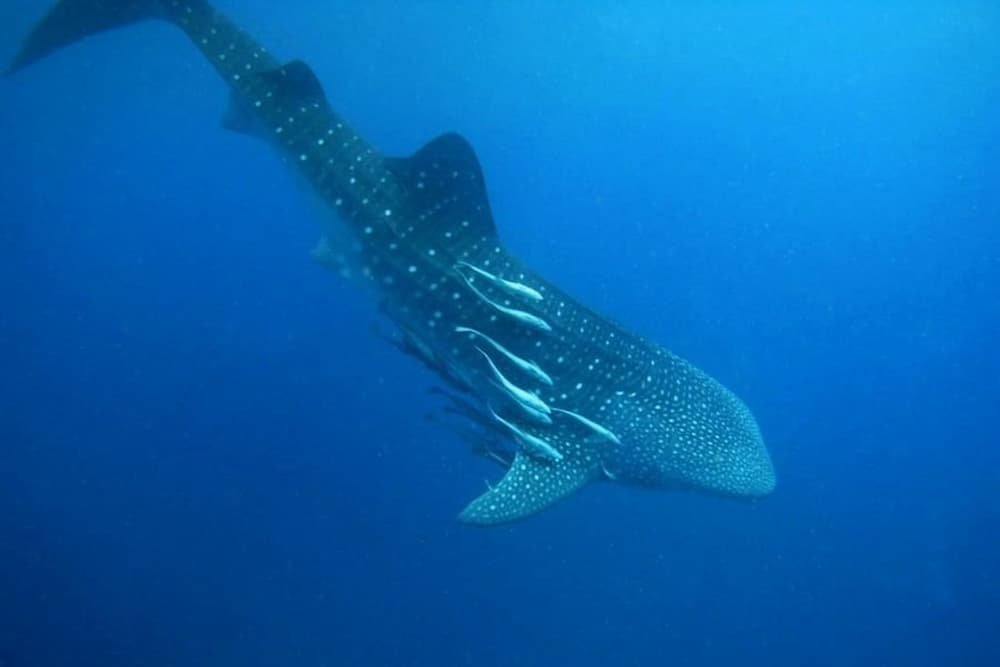
Translating as “Bird of Paradise,” pretty Cenderawasih Bay scoops into Indonesia’s West Papua, as well as New Guinea. The west part of the bay is a designated marine national park, and one of the largest in Southeast Asia, covering 80 square kilometers. Fed by a quartet of rivers – the Wapoga, the Tabai, the Wamma, and the Warenai River – it’s easy to see why this cove is such an important marine environment and the perfect home for whale sharks.
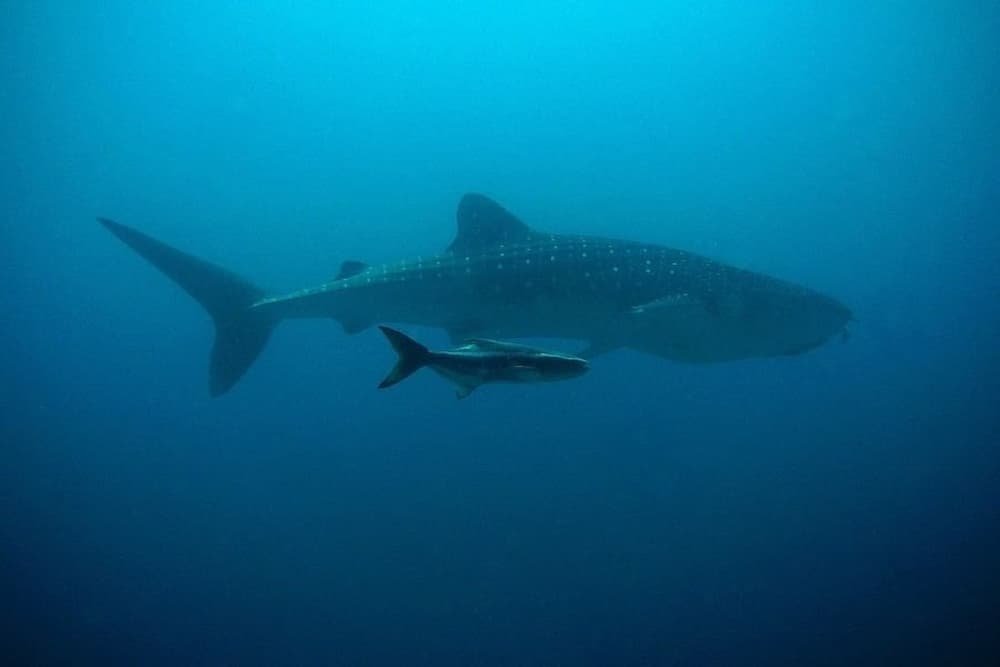
Thailand’s Koh Tao is noted as one of the cheapest diving destinations in the world, with many full-moon-partygoers heading to little “Turtle Island” to get their PADI and nurse a hangover. Whale sharks are often spotted at Chumphon Pinnacle, which is only 15 minutes offshore.
There are plenty of diving operators to choose from and we hear great things about Big Blue. However, if you prefer to snorkel, you may have to negotiate with a diving school to see if you can tag along on a dive boat, as snorkeling tours are not common.
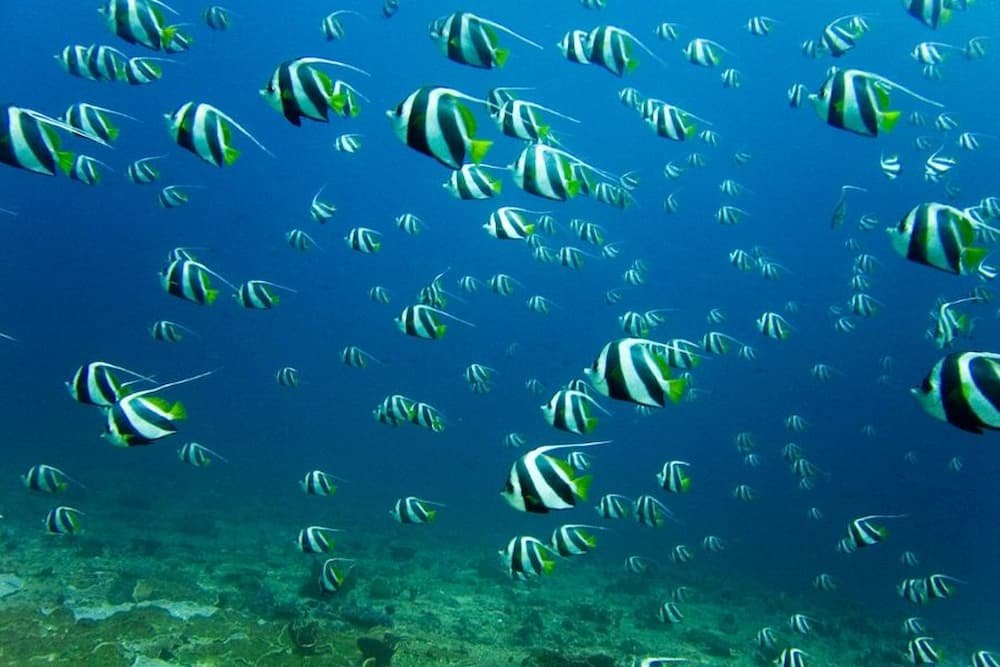
400 kilometers north of Mozambique’s capital city, Maputo, Tofo Beach, and the surrounding waters make for one of the best diving destinations on the planet. This region is believed to be Africa’s best whale shark sighting spot, thanks to the abundance of plankton living in this habitat. Choose between the trio of dive sights at the so-called Whale Shark Alley: Chamber of Secrets, Marble Arch, and Simon’s Town.
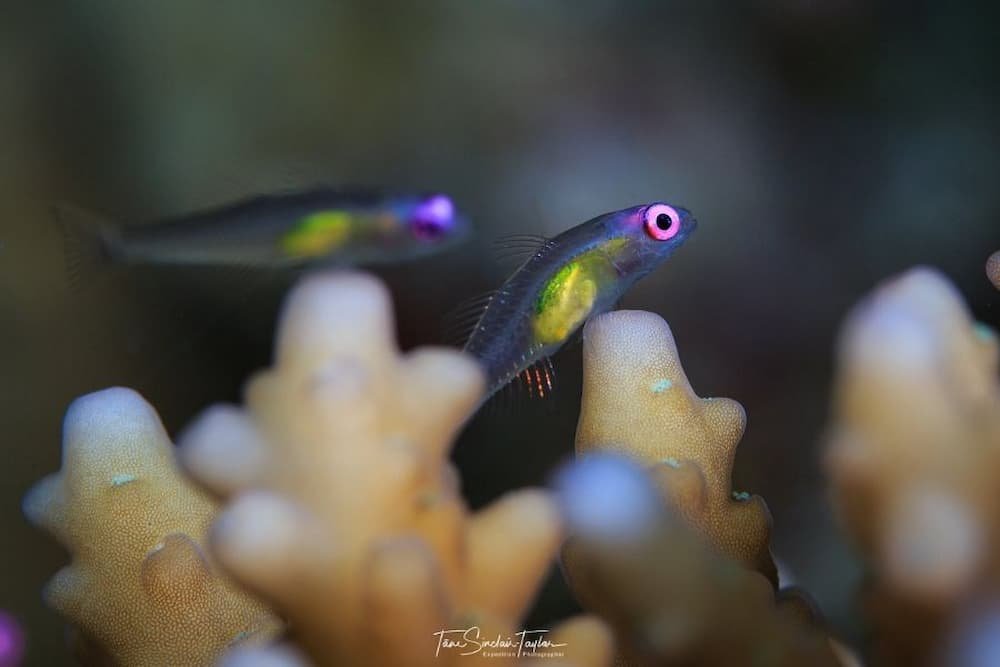
One of the newest additions on the whale shark radar, the Al-Lith aggregation in the Red Sea off Saudi Arabia was discovered to be a whale shark hotspot in 2014. Woods Hole Oceanographic Institute and King Abdullah University are currently working together to study the whale sharks in this region.
The isolated reef is the perfect home for young whale sharks and the population is estimated to be 50/50 male and female, which is very unusual. A co-ed whale shark high “school” of fish, perhaps?

1,200 kilometers north of the west coast city of Perth, the UNESCO World Heritage Site of Ningaloo, in Australia, is home to a huge variety of marine life. This, of course, includes whale sharks. Stretching for 300 kilometers, Ningaloo Reef is the country’s biggest coral reef, home to more than 500 different species of fish.
Choose Ningaloo Whalesharks as your operator and you’ll also be able to enjoy whale shark views from the air on their own spotter plane. This company is also reported to be the most generous with swimming time, so you’ll have plenty of opportunities for meeting these graceful giant fish. Base yourself in Exmouth for whale shark tours, as most operators pick up from here.
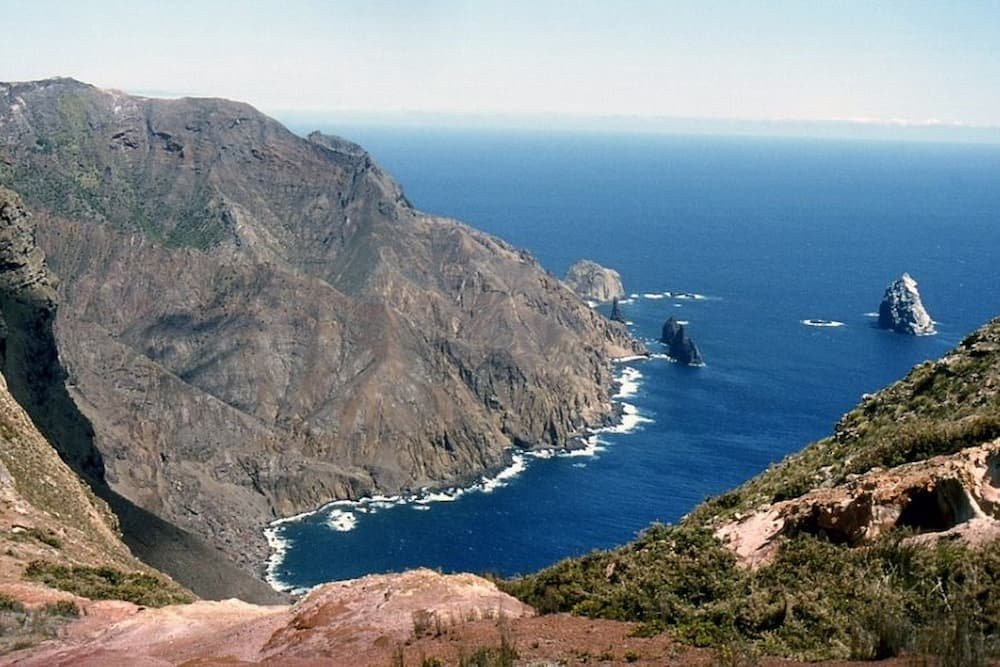
Little St Helena, a remote Atlantic island and British overseas territory, is one of the most significant whale shark spots known to science. It’s the only known place in the world where both male and female adults are found, suggesting that the waters off this isolated isle are a key mating environment.
What’s more, St Helena is ideally located between the two main subpopulations of whale sharks – those in the Indo-Pacific region and those in the northwest Atlantic. How are these populations connected? How are they different? Scientists have no idea, but this little drop in the ocean makes for an interesting whale shark study.
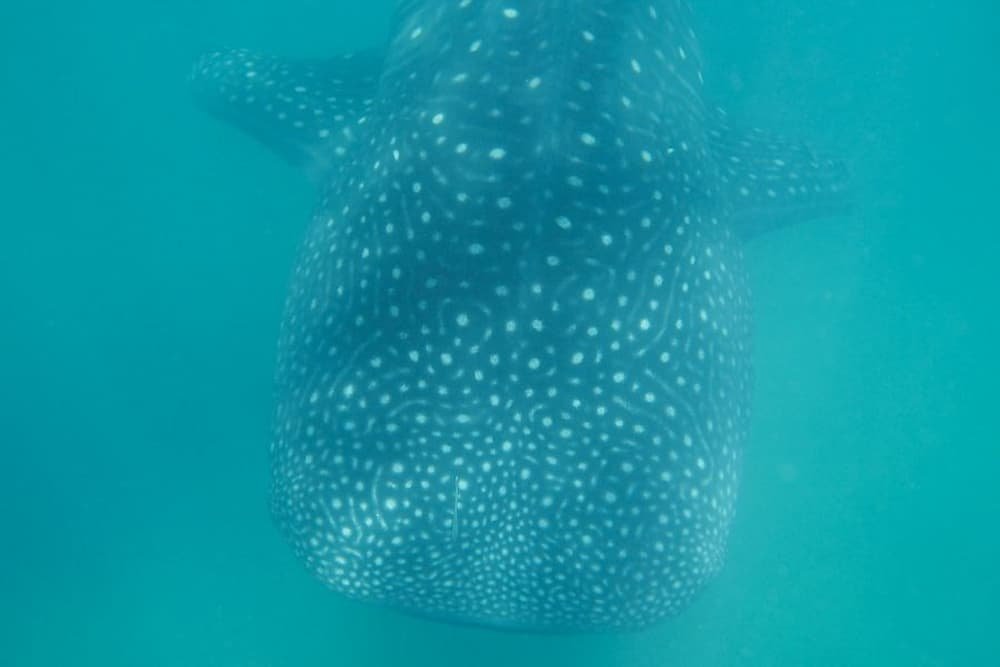
The tiny fishing village of Donsol, located in South Luzon in the Philippines, was truly put on the map in 1998 when the local government and World Wildlife Fund retrained local whale shark hunters as tour guides. Although there may be fewer fish here than in Cebu, the Philippines’ well-known whale shark destination, tours are ethical here (in Cebu, the whale sharks are fed).
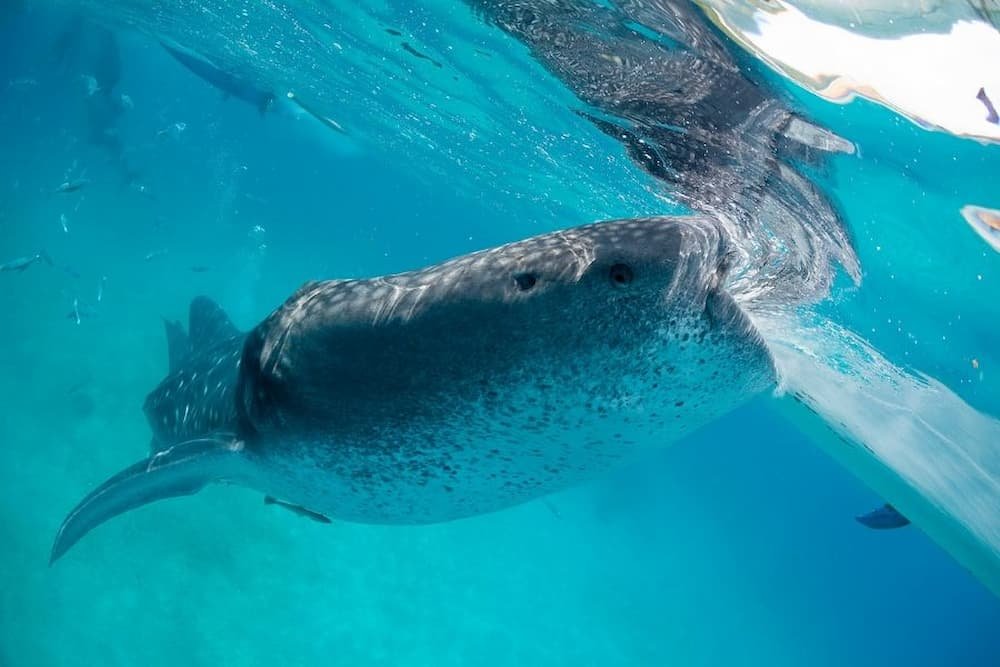
Oslob is right at the tip of Cebu and not far from other prime diving destinations, such as Dauin and Moalboal. A couple of resorts offer “swimming with whale sharks” experiences, but there are also snorkeling tours available.
However, do note that fishermen here are authorized to feed the whale sharks, which is why they frequent this area in particular. This makes the whale sharks lethargic and causes unnatural behaviors. What’s more, there are often large numbers of snorkellers interacting with whale sharks due to the area’s popularity, which isn’t the most responsible tourism practice.
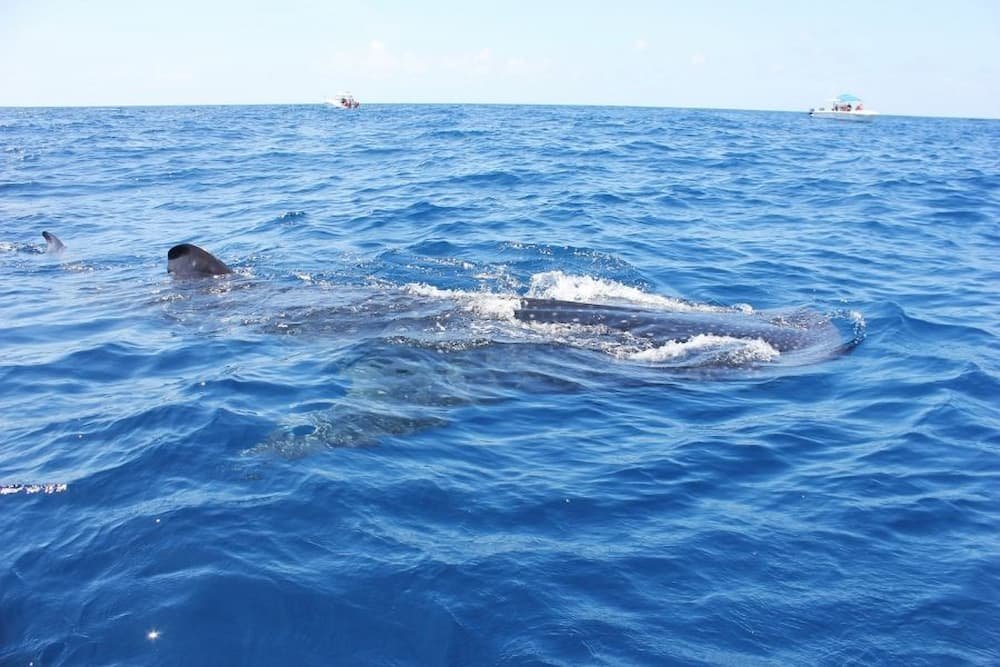
A 25-minute boat ride from Mexico’s Quintana Roo, only 150 kilometers from Cancun, lies the northern Isla Holbox. As the island is located right at the gateway between the Caribbean and the Gulf of Mexico, this makes the sleepy island ideal for visiting whale sharks.
For tour operators, Willy’s is the most highly recommended, but there are plenty of options available. You can also take boat tours from neighboring Cancun or Playa del Carmen to see these giants of the sea, but a stay on idyllic Isla Holbox is the best option for a relaxing whale shark getaway.
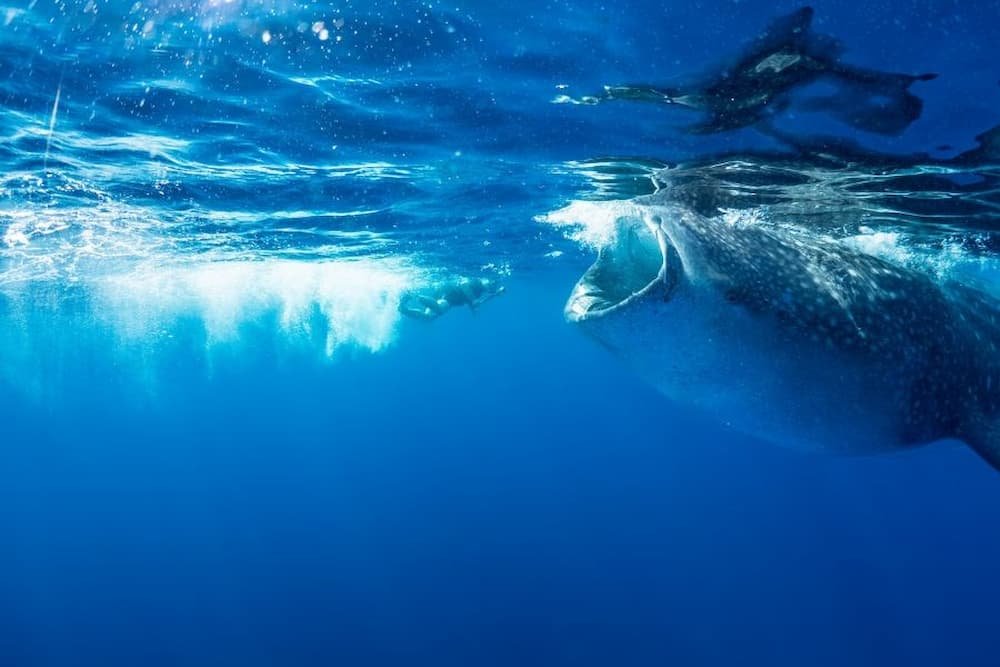
Not too far from Isla Holbox, off the east coast of Mexico’s Yucatan Peninsula, lies Isla Mujeres (“Women’s Island”). The story goes that Ixchel, the Mayan goddess of the moon, made this her sacred home. Female priestesses inhabited the island until explorer Francisco Fernandez de Cordoba rocked up in 1517, after which the island turned to fishing and whale shark hunting. However, with the turn of the millennium, the tides changed and the island chose sustainable whale shark watching activities as its thing instead.
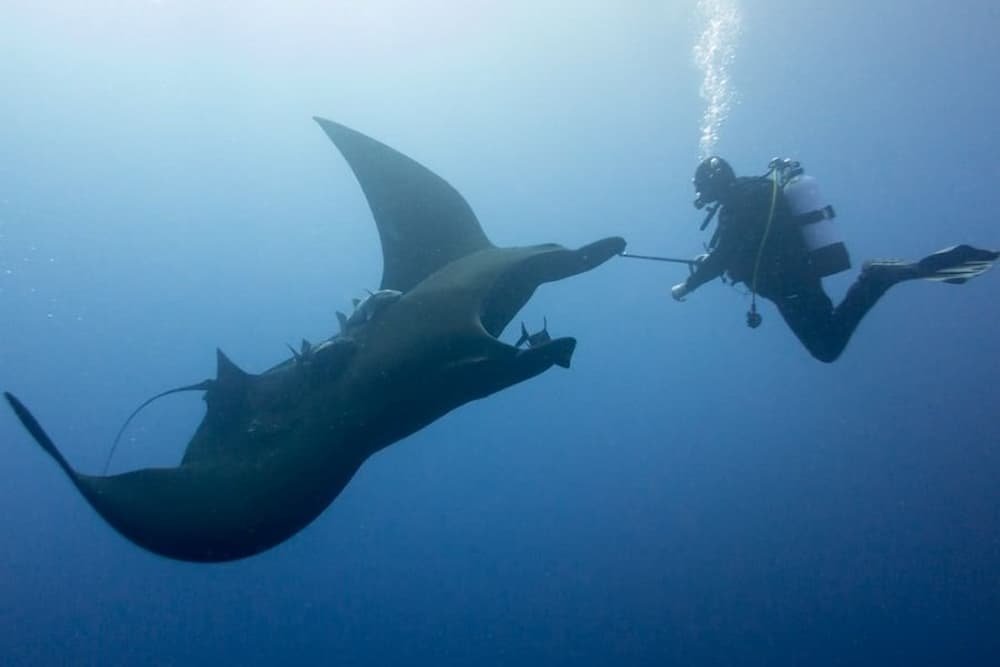
Flipping to the west of Mexico, the Socorro islands (or Revillagigedo Islands) can be found 385 kilometers south and west of Cabo San Lucas.
Nicknamed “Mexico’s Little Galapagos,” the depths surrounding these isles do not disappoint divers. A dip in the waves here offers sightings of humpback whales, giant manta rays, and dolphins, as well as fan favorites, and whale sharks. Whale sharks arrive here in May and can be found swimming in the waters until December.
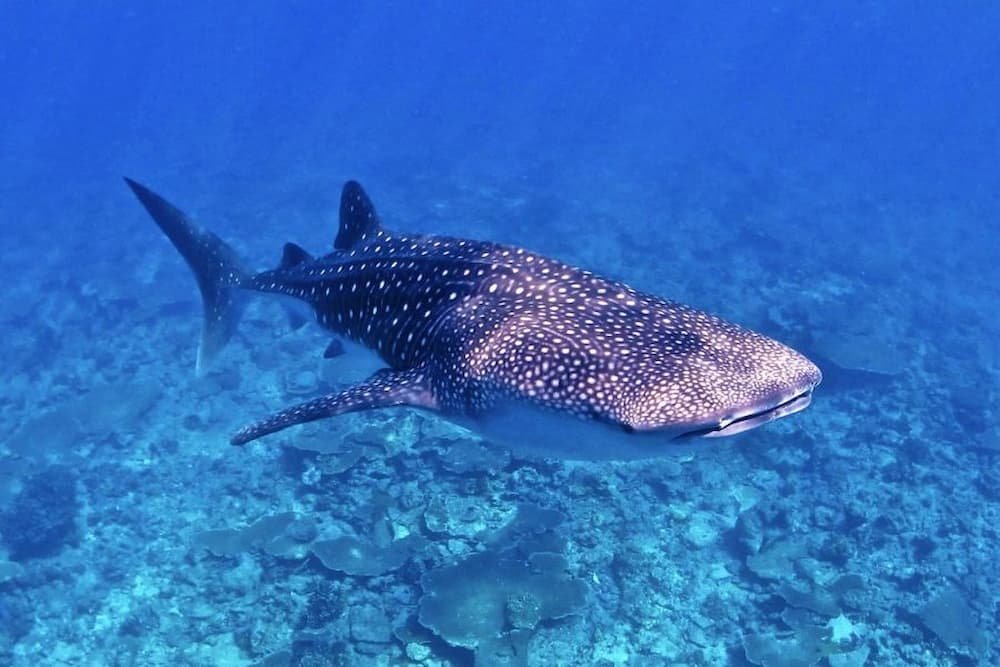
Another new addition to the whale shark map in the Middle East is the Al Shaheen Oil Field, 90 kilometers off the coast of Qatar. The local whale sharks have long been spotted by fishermen and offshore platform workers, but it’s only recently that the abundance of these creatures and the importance of the habitat have been noted by marine experts.
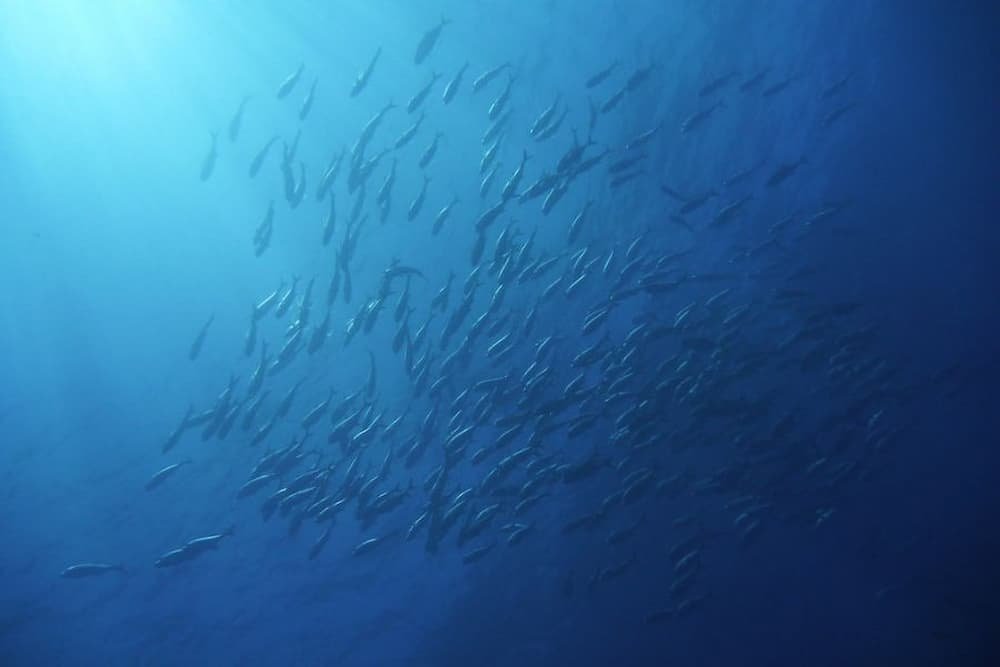
The UNESCO World Heritage Sites of Gladden Spit and the Silk Cayes Marine Reserve are just 40 kilometers off the south coast of Belize. Stay one of the cabanas in the sandy city of Placencia (“Pleasant Point”) for prime snorkeling and diving activities with whale sharks. Take a lo at Placencia’s Sea Horse Dive Shop for some of the most popular tours.
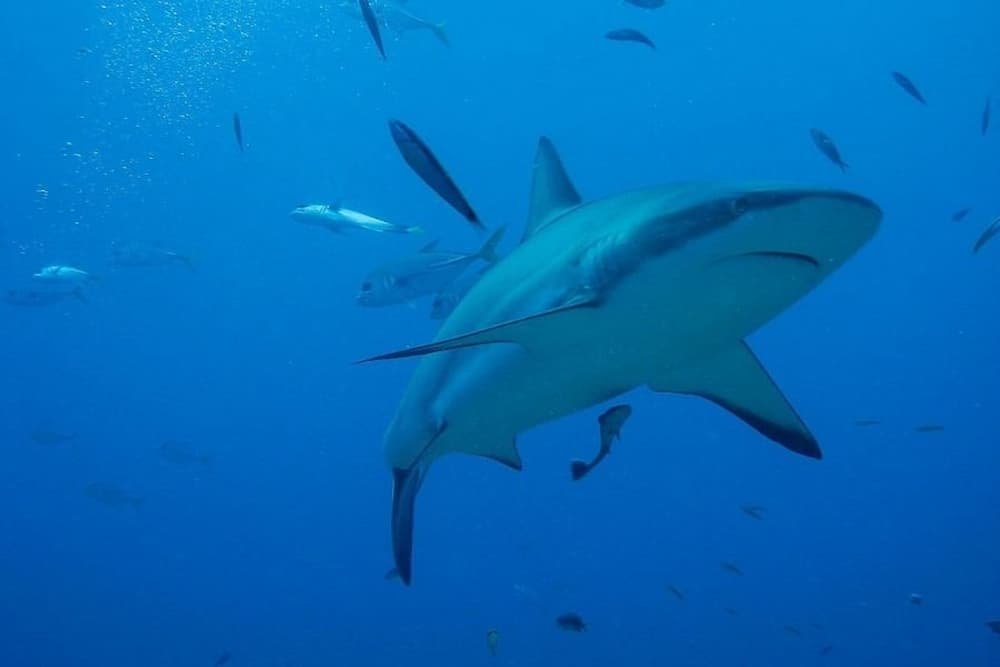
Utila in Honduras is one of the cheapest places in the world to dive, making this spot one of the best value whale shark destinations available. Take a look at the Whale Shark and Oceanic Research Centre for tour operator recommendations, or simply flag down one of the dive boats heading north of the island.
Locals report that you can sometimes see whale sharks from the shore. Look out for jumping tuna – an indicator that a whale shark is about. In terms of diving, head to the northern coast and the area known as Utila Open Water, where a dropoff into the big blue offers exhilarating whale shark encounters.
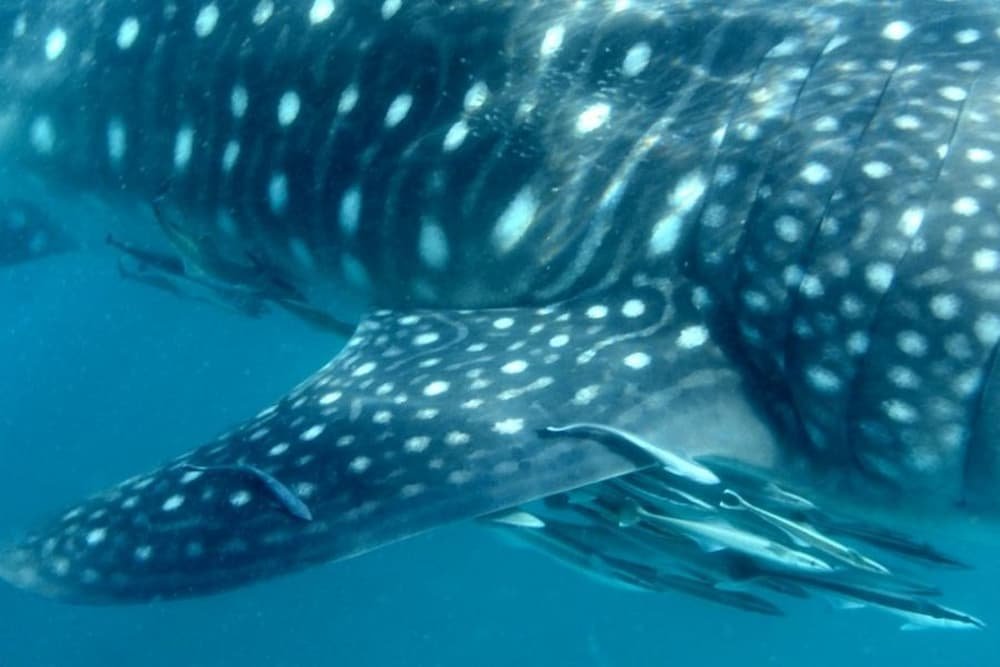
Located off the coast of Tanzania, just south of Zanzibar, Mafia Island doesn’t actually have anything to do with the Italian Mafia. The word is Swahili for “healthy dwelling place,” which is the perfect name for this idyllic island. The local whale sharks are known as papa shilingi (“coin shark”) to islanders, after the coin-shaped dot patterns on their backs. Each is unique, like a finger.
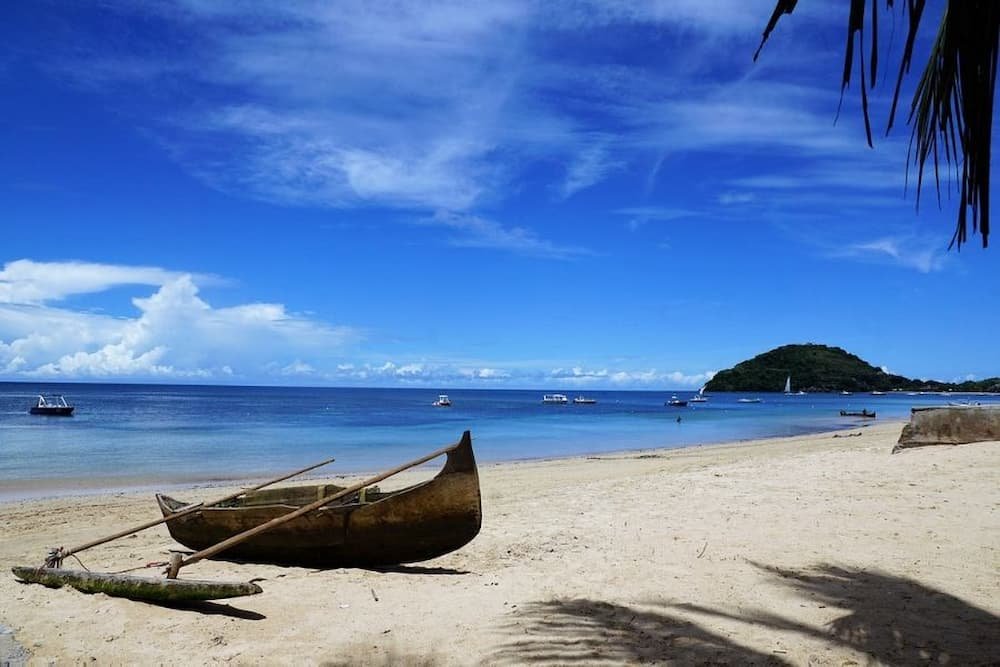
Nosy Be (“Big Island”) is the largest island in Madagascar’s archipelago, though it’s also known as Nosy Manitra (“Perfume Island”) because of the sweet scents of vanilla and ylang-ylang lingering in the air.
Head off the fragrant isle into clear waters and you’ll find a diverse range of marine species and reefs fed by the South Equatorial Current. Manta and Mobula rays, dolphins, turtles, rare Omura’s and Bryde’s whales, humpback whales, and whale sharks all frequent these waters. The peak season is between October and December.
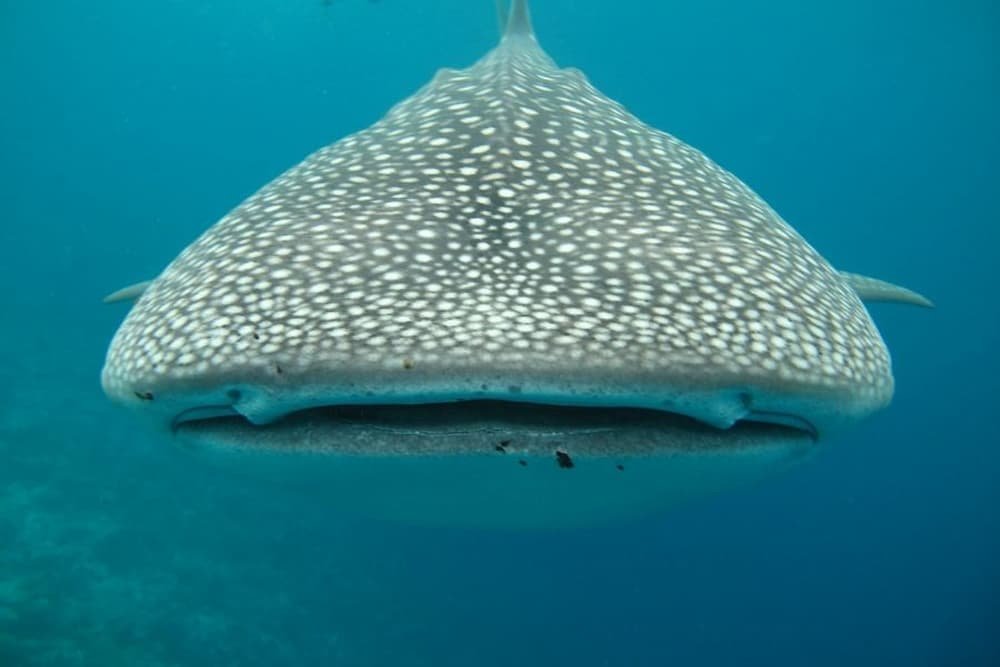
For near-guaranteed whale shark sightings, you can’t go wrong with the Maldives. The giant sea creatures are present around the archipelago all year, though they tend to favor the west islands between May and December, then the east between January and April. The population found in these warm waters is comprised of mostly young males.

Nestled in the west of the Gulf of Tadjoura, Djibouti’s Bay of Ghoubbet is one of the most reliable places for whale shark sightings. Some of the creatures have even been known to swim close to shore, so you can simply grab your snorkel and paddle out to see them.
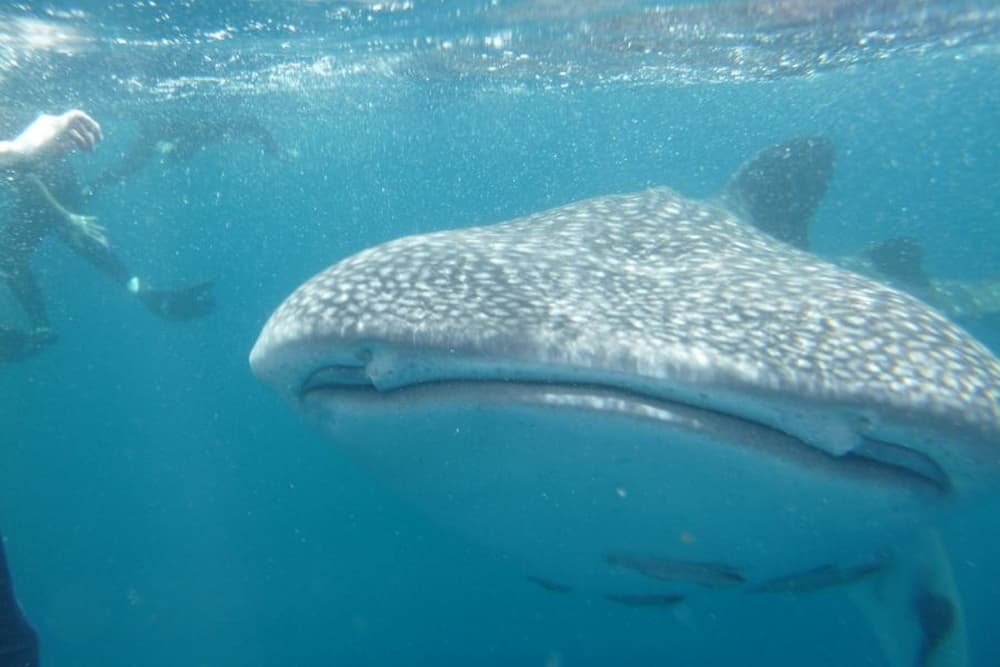
The Galapagos Islands are a bucket list wildlife destination for any animal enthusiast, so it’s no surprise that the waves surrounding these biodiverse islets are also home to whale sharks. Head to the north of the Galapagos Marine Reserve to Darwin island and you’ll be treated to sightings of pregnant females. The mothers-to-be hang out around the Galapagos before heading deeper into the Pacific.
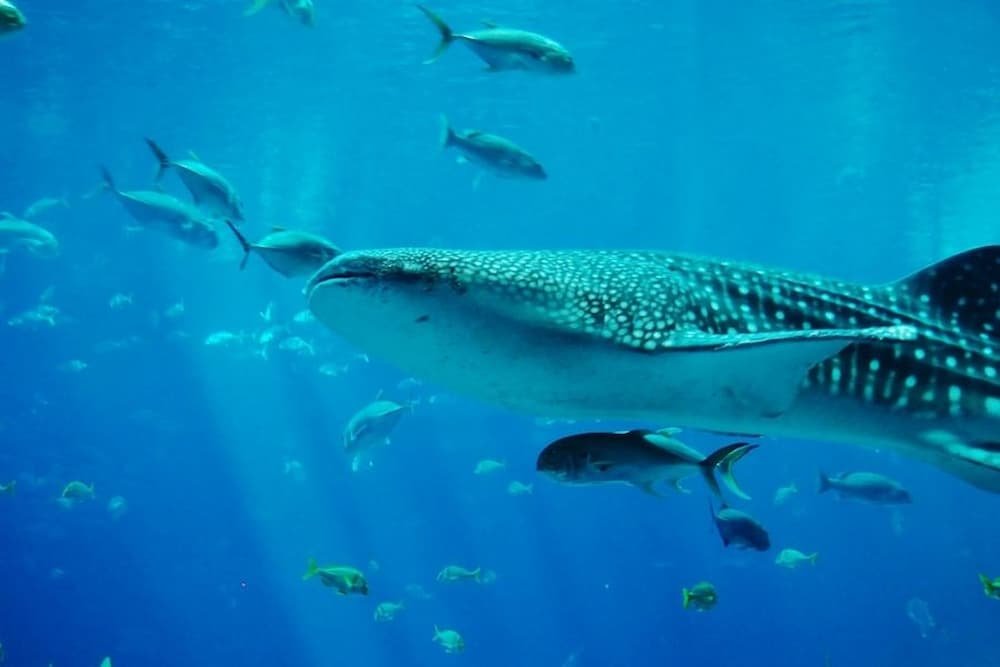
If your budget doesn’t quite stretch to an overseas trip at present, there may be another option a little closer to home. The Georgia Aquarium in Atlanta offers Journey with Gentle Giants. This activity includes snorkeling or scuba diving with whale sharks in a tank the size of a football field.
The tank is aptly named “Ocean Voyager” and is home to four whale sharks, four manta rays, turtles, and plenty of other marine life. The swim program is available daily at 4.30 pm and prices start at US$212.95 plus tax for two and a half hours of swimming time.

Another destination in the Philippines that is popular for diving with whale sharks. Although the number of tourists is typically limited to avoid overcrowding and snorkelers have limited time with these gentle giants this is definitely a developed spot that is built for tourism rather than a natural encounter.
Although whale sharks don’t harm humans, the same can’t be said for the other way around. Although the whale shark isn’t officially listed as endangered, that’s only because there’s a lack of data about whale shark numbers (because they’re so dang mysterious!). Pollution, boats, fishing, and irresponsible tourism practices are certainly depleting numbers fast.
No matter where you choose to go to see whale sharks in the wild, make sure you do your research and go with a reputable, responsible tour operator. When swimming, snorkeling, or diving with whale sharks, remember not to get too close, don’t touch the animals, wear eco-friendly sun-cream, and never use flash photography.
